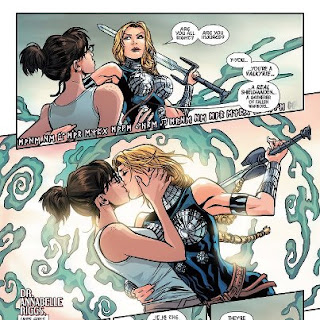I’m cleaning up around the house (again) and I find I have piles and piles of books I picked up at MoCCA, TCAF and various doujinshi from last year and I haven’t really had a chance to tell you about much of it. Not all of it has a place here, like Lance Tooks’ The Student (Or, Nude Descending a Staircase…Head First), but at least some of it does.
Last summer I read and reviewed classic literature that I had somehow missed reading in my youth. This summer I’m going to look at the future and review some of the stuff that you should know about.
Today we’re starting off with a major contender for someone you should know about.
Molly Ostertag is a name I’m seeing more and more in the comics news. She’s another graduate of the SVA, and another smart, talented young woman doing stuff of interest to me. ^_^
![]() In Strong Female Protagonist, created with Brennan Lee Mulligan, we are introduced to Alison, a typical NY college student…only she’s not. She’s a former super-hero, now retired, facing pressure to be what she was from her former allies, to be what she can be from her former enemy and a desire to be who she is now, from herself.
In Strong Female Protagonist, created with Brennan Lee Mulligan, we are introduced to Alison, a typical NY college student…only she’s not. She’s a former super-hero, now retired, facing pressure to be what she was from her former allies, to be what she can be from her former enemy and a desire to be who she is now, from herself.
Mulligan and Ostertag deftly lay down Alison’s life in the middle of contemporary socio-political issues, and layers it with superheroes and villains, then neatly twists it into a conundrum with a nasty stick in the spokes. Like Alex Woolfson’s Young Protectors, relationship and sex are a part of the labyrinth Alison has to navigate, but moral compass and being in and of the world take precedence.
Alison is not alone in this. She has friends (who don’t *quite* seem to understand her,) an older woman who is her government-appointed doctor and, when Alison is ready, friend and confidante – and there is another. But no spoilers. You’ll just have to read it for yourself. which you can do, as it is a webcomic and also available on her shop.
Strong Female Protagonist and The Young Protectors are the next wave of superheroes, dealing with life without the hyper-angsty constipation of their Big Two ancestors.
![]() While at MoCCA, I also picked up Ostertag’s Khutulun, the Wrestler Princess, a short biography of a real -life 13th century Mongolian Princess who was eventually respected for her abilities as a soldier and an athlete. If you’ve read Paros no Ken, you’ll recognize the narrative, but the ending here is more conventionally acceptable. Where Erminia wanted to shed her duties completely for a different life, Khutulun wasn’t seeking to topple a gender paradigm or her societal responsibilities, she merely wanted to be herself. (Interestingly, SVA alum Marguerite Dabaie is working along the Silk Road into China, for a graphic novel about life in 7th century Pajikant. So clearly the steppes and the plains are calling to the comic artists of NYC. ^_^)
While at MoCCA, I also picked up Ostertag’s Khutulun, the Wrestler Princess, a short biography of a real -life 13th century Mongolian Princess who was eventually respected for her abilities as a soldier and an athlete. If you’ve read Paros no Ken, you’ll recognize the narrative, but the ending here is more conventionally acceptable. Where Erminia wanted to shed her duties completely for a different life, Khutulun wasn’t seeking to topple a gender paradigm or her societal responsibilities, she merely wanted to be herself. (Interestingly, SVA alum Marguerite Dabaie is working along the Silk Road into China, for a graphic novel about life in 7th century Pajikant. So clearly the steppes and the plains are calling to the comic artists of NYC. ^_^)
If you’re staring at your comics/manga collection, wishing there was something fresh to look at, click the links in this review. Ostertag (with and without Mulligan), Woolfson, and Dabaie are all writing the stories they – and I – wanted/needed to read…and hopefully you will as well. ^_^






